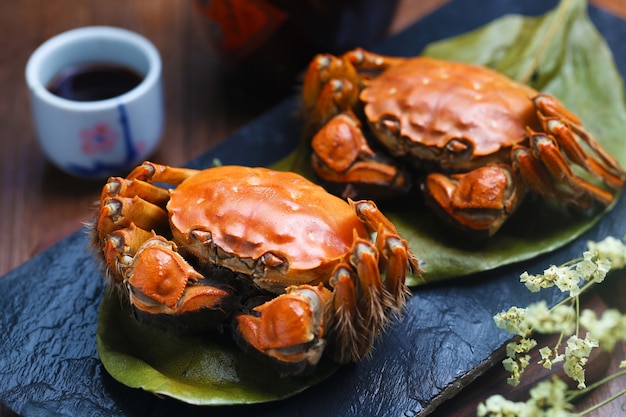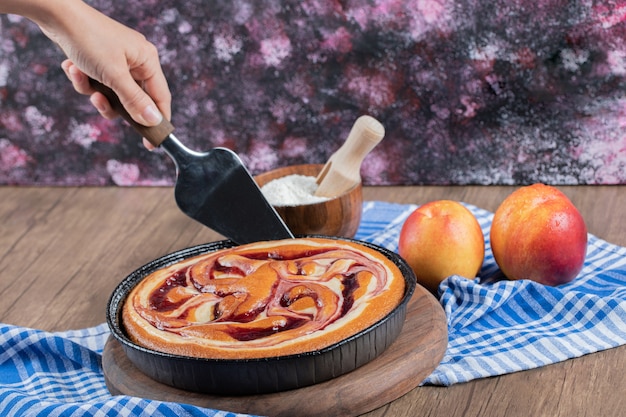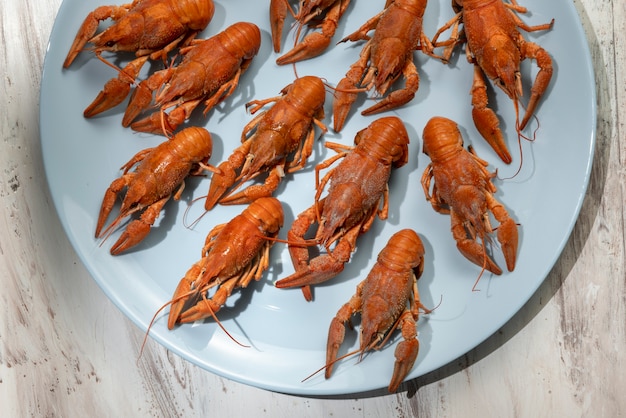Imagine this: a warm summer evening, a gentle sea breeze, and a table piled high with steaming blue crabs, their bright red shells glistening under the golden light. That's the scene I'm picturing, and I'm here to make it your reality. I've been a crab enthusiast for years, and I've learned a thing or two about cooking these delectable crustaceans to perfection. So, gather round, grab a cold drink, and let's dive into the world of blue crabs!
Part 1: The Journey Begins - Choosing the Right Blue Crabs

The first step in any crab adventure is choosing the perfect specimens. You want crabs that are lively and fresh, brimming with delicious meat. So how do you spot a champion crab? It's all about paying attention to the little details.
The Anatomy of a Blue Crab
Let's start with the basics. A blue crab's most distinctive feature is its, well, blue color! The coloration is most prominent on the claws, but the shell, which is officially called the carapace, is where the magic happens. That's where you'll find the most meat and flavour. Don't forget the legs, though; those little fellas are packed with deliciousness too. You might notice some little pointy bits on the sides of the crab. These are called "aprons," and they're a handy way to tell if you've got a male or a female crab.
The Tell-Tale Signs of a Perfect Crab
Liveliness: A fresh crab is going to be full of energy. Look for crabs that are moving their legs and claws, and maybe even give them a gentle tap. If they scurry back into their shell, you've got a winner!
Firm Shell: The shell should be firm and hard, not soft or squishy. A firm shell indicates a healthy crab that's packed with meat.
No Odors: fresh crabs shouldn't have a strong, fishy smell. If you notice a strange odor, it's best to move on.
Part 2: Preparation is Key – Getting Ready to Cook

Now, before you get your hands dirty, there's some prep work to do. Cleaning your crabs is essential to ensure a delicious and safe meal. Don't worry; it's not as intimidating as it sounds. I'll walk you through it step by step.
Cleaning Your Crabs: A Step-by-Step Guide
1. The Rinse: First, give your crabs a thorough rinse under cold running water. You want to remove any sand or debris they might have picked up during their travels.
2. Removing the Apron: The apron is the small, triangular flap on the underside of the crab. To remove it, you'll need a good pair of kitchen shears or a sharp knife. Carefully cut the apron off, and be sure to dispose of it.
3. Cracking Those Claws: This is a vital step, and it's best done before cooking. You'll need a crab cracker or a sturdy mallet to crack the claws. This will make it easier to get at the delicious meat later.
4. Final Rinse: After removing the apron and cracking the claws, give your crabs one last rinse to ensure they're clean and ready to cook.
Part 3: The Steam Rises – Cooking Your Crabs

The cooking process is where the real magic happens. The aroma of steaming crabs is intoxicating, and the anticipation as they cook is almost unbearable.
Steaming: The Classic Method
1. The Steaming Pot: Start by filling a large steamer pot with about an inch of water. Bring it to a rolling boil. Steaming is the classic way to cook crabs, and it's my personal favorite.
2. Flavour Explosion: Now for the fun part! Add a cup or two of your favourite seasoning mix to the boiling water. My go-to blend includes old bay seasoning, garlic powder, onion powder, and peppercorns. Feel free to experiment with different combinations.
3. Steaming Time: Once the water is boiling, carefully place your cleaned crabs in the steamer, ensuring they're not overcrowded. Steam for 15-20 minutes, or until the crabs are a bright red colour and the meat is cooked through.
4. Let Them Rest: Once the crabs are cooked, remove them from the steamer and let them cool slightly before cracking them open. This allows the steam to distribute the flavours evenly throughout the meat.
Other Cooking Methods: Boiling, Grilling, and More
Steaming might be the classic, but it's not the only way to cook a crab. Boiling is a popular alternative, and you can even grill them for a smoky, char-grilled flavour.
Boiling: Simply bring a large pot of salted water to a boil, add your seasonings, and then carefully add the crabs. Cook for 10-15 minutes, or until the crabs are cooked through.
Grilling: Preheat your grill to medium-high heat. Lightly brush the crabs with olive oil and season with your favourite seasonings. Grill for 10-15 minutes, flipping them halfway through, until the shells are cooked through and the meat is opaque.
Part 4: Feasting Time – How to Crack and Enjoy Your Crabs
You've waited long enough, it's time to dig in! Cracking open those succulent crabs can be a little messy, but it's a delicious and satisfying experience.
Cracking Those Shells:
The Claws: Start with those claws. Use your crab cracker to crack them open, then carefully pry the meat out with a fork or a pick.
The Body: Next, tackle the body. Break through the shell with your crab cracker or a heavy-duty knife. Be warned, it can be a bit of a messy affair, but the deliciousness inside is worth the effort.
The Legs: Don't forget those little legs! They might be a bit tricky to get to, but they hold a treasure trove of flavourful meat.
Eating Like a Pro:
The Tools: You'll need your trusty crab cracker, a fork, and a stack of paper towels.
Embrace the Mess: It's practically inevitable, so just let loose and enjoy the experience.
Save the Shells: Those shells aren't just for decoration. They can be used to make delicious crab stock or soup.
Part 5: More Than Meat – The Versatile World of Blue Crabs
Blue crabs aren't just a delicious dinner; they're a versatile ingredient that can star in a variety of dishes.
Beyond the Whole Crab:
Crab Cakes: These little bites of heaven are a crowd-pleaser, and they're a fantastic way to use up leftover crab meat. They're typically made with a mixture of crab meat, breadcrumbs, mayonnaise, and seasonings, then pan-fried or baked.
Crab Dip: A classic party appetizer, crab dip is always a hit. It's typically made with cream cheese, crab meat, and seasonings.
Crab Soup: This comforting soup is perfect for a cold day. It can be made with a variety of ingredients, but the base is usually a creamy broth with crab meat, vegetables, and seasonings.
Crab Risotto: A luxurious and flavourful dish that's perfect for a special occasion. It's made with arborio rice, crab meat, and a flavorful broth.
Get Creative in the Kitchen:
Crab Pasta: Add some crab meat to your favourite pasta dish for a quick and easy meal. It's delicious with a simple tomato sauce or a creamy alfredo sauce.
Crab Pizza: Top your pizza with crab meat, cheese, and your favourite toppings for a unique and satisfying pizza experience.
Crab Salad: A refreshing and light salad that's perfect for summer. It's typically made with crab meat, mayonnaise, celery, onions, and a light dressing.
Part 6: The Art of Seasoning – Adding Some Flavour to Your Feast
Now, let's talk about seasoning. The right seasoning can transform a good crab dish into a culinary masterpiece.
Old Bay: The Classic Choice
Old Bay seasoning is a must-have for any crab enthusiast. It's a blend of herbs and spices that gives crabs a salty, peppery, and slightly sweet flavour. I use it in my steamer, but I also like to sprinkle it on top of cooked crabs for an extra kick.
Homemade Seasoning Blends:
Garlic and Herb: Mix garlic powder, onion powder, parsley, and thyme for a fragrant and flavourful blend that complements the natural sweetness of the crab.
Spicy Kick: Add some cayenne pepper, paprika, and chili powder to your Old Bay seasoning for a spicy kick.
Sweet and Tangy: Mix lemon zest, orange zest, and brown sugar for a unique and sweet flavour that balances the savory taste of the crab.
Don't Forget the Lemon
And finally, don't forget a good squeeze of lemon juice! It brightens the flavour of the crab meat and cuts through the richness, making it even more delicious.
Part 7: From the Ocean to Your Table – The Sustainable Side of Blue Crab
We've talked about the deliciousness of blue crabs, but it's also important to consider their sustainability. We want to ensure that these tasty creatures are available for generations to come.
Making Sustainable Choices:
Seasonality: Blue crabs are best enjoyed during the warmer months, so be mindful of the seasonality of these crabs.
Size Matters: Choose crabs that are at least 5 inches wide. This ensures they've had enough time to reproduce and contribute to the healthy population.
Support Responsible Fishing Practices: Look for crabs that are caught using sustainable methods, such as hand-picking or trapping. These methods help to minimize damage to the environment and ensure a sustainable harvest.
Part 8: FAQs – All Your Blue Crab Questions Answered
I've covered a lot of ground here, but I know you might still have some questions. Here are some common ones:
FAQs:
1. How long do crabs live?
Blue crabs typically live for about two years.
2. Can you eat the entire crab?
You can eat the meat from the claws, legs, and body, but the shell and the gills are not edible.
3. How do you tell if a crab is cooked?
A cooked crab will be bright red, and the meat will be firm and white.
4. How do you store leftover crab meat?
Store leftover crab meat in an airtight container in the refrigerator for up to 3 days.
5. What kind of wine pairs well with blue crabs?
A dry white wine, such as Sauvignon Blanc or Chardonnay, is a good pairing for blue crabs. The acidity in these wines helps to cut through the richness of the crab meat.
Part 9: The Final Bite – A Crabfest Conclusion
You've got the knowledge, the tools, and the recipes - it's time to get cracking! I hope this guide has given you the confidence to create a delicious and unforgettable blue crab feast. Don't be afraid to get messy, enjoy the company of good friends, and appreciate the amazing flavours of these little crustaceans. Happy feasting!
Everyone is watching

Corn on the Cob: The Ultimate Guide to Perfectly Cooked Ears
Healthy MealsAh, corn on the cob. Just the name evokes images of sunny days, barbecues, and that sweet, juicy flavour that ...

Scallops: The Ultimate Guide to Perfect Cooking
Healthy MealsAh, scallops. Those delicate, sweet, and utterly delicious morsels of the sea. They hold a special place in my...

Spaghetti Squash: The Ultimate Guide to Cooking and Serving
Healthy MealsRemember that time you saw spaghetti squash at the supermarket, looking all bumpy and strange, and thought, "W...

Salmon Cooking Times: Perfect Guide for Every Recipe
Healthy MealsLet me tell you, cooking salmon is an art form. It's all about getting that perfect balance: juicy and tender,...

Ham Cooking Time: How Long to Bake, Smoke, or Boil a Delicious Ham
Healthy MealsAh, ham. It's a classic, isn't it? A real crowd-pleaser, especially around holidays. And when done right, it'...
